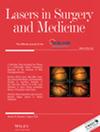Fractional Radiofrequency and Oral Isotretinoin—A Prospective Randomized Controlled Split-Face Trial Comparing Concurrent Versus Delayed Fractional Radiofrequency Treatment for Acne Scars
Abstract
Background
Therapeutic dogma has been to treat acne scars no less than 6 months after isotretinoin (ITN) cessation.
Objective
To evaluate the safety and efficacy of fractional radiofrequency (FRF) in patients treated concurrently with ITN.
Methods
We conducted a prospective randomized control 3-arm comparative trial to evaluate the treatment of acne scars. Patients received one of three treatment options: (A) ITN and FRF concurrent treatment, (B) ITN monotherapy, and (C) FRF 6 months post-ITN treatment. Patients in the FRF cohorts received three monthly sessions. Patients were followed for adverse effects up to 6–9 months post-FRF treatment. Final cosmesis was scored by three independent dermatologists using two scales: the Echelle d'Evaluation Clinique des Cicatrices d'Acne (ECCA) and an internal 5-point investigator's scale, indicating the percentage of improvement. Subjective analyses by patients were also assessed.
Results
Objective and subjective analyses revealed improvement in the ITN-FRF cohort, which was superior to the delayed FRF cohort and the ITN monotherapy cohort. Specifically, the concurrently treated cohort (ITN-FRF) had a significant reduction in acne scar volume from baseline mean (151.1 ± 44.7 to 97.0 ± 31.2, p < 0.005), outperforming both the delayed FRF and monotherapy ITN treatment cohorts, respectively (155.4 ± 37.8 to 122.0 ± 46.2, 144.6 ± 82.8 to 132.4 ± 62.7). Additionally, the concurrently treated cohort demonstrated improved ECCA scores (36.8 ± 15.5), significantly better than the ITN monotherapy cohort (101.5 ± 20.1, p < 0.01).
Limitations
Limited patient sample size: 38 patients completed the study; mostly Fitzpatrick Type II–III skin; photographic assessments utilized.
Conclusion
Per our prospective trial, concurrent treatment of ITN-FRF is superior to delayed FRF treatment 6 months post-ITN cessation.


 求助内容:
求助内容: 应助结果提醒方式:
应助结果提醒方式:


